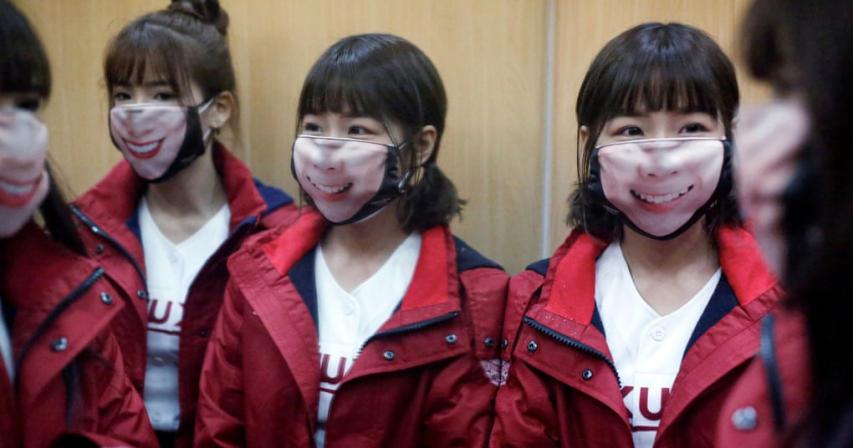Coronavirus face masks: why covering up is becoming the new normal
- 4 years ago

When coronavirus emerged in China, people across much of the region were quick to start wearing some form of face mask when they went out in public. Memories of the Sars epidemic were still strong, and there is a cultural tradition of wearing masks to protect oneself and others.
In the west, however, even though masks sold out as fast as hand sanitiser in chemists and online as people stockpiled supplies, initially there was widespread reluctance to wearing face coverings in public.
The divide was so strong that, as racism against people of east Asian heritage rose sharply, some stopped wearing masks because face protection had become a focus for abuse, discrimination and stigma.
A few weeks later, masks and improvised substitutes are rapidly becoming the new normal in cities from New York to Berlin, and those who go out without their nose and mouth covered risk censure or stronger penalties.
Millions of people are even learning how to create their own as they wait for supplies to return to stores around the world.
Take up has been slow because, for months, scientists and authorities were divided on whether they help slow the spread of the disease. The World Health Organization today still recommends their use by anyone coughing or sneezing, but says healthy people should use them only if taking care of someone infected with the coronavirus.
It seems increasingly likely that where masks do provide a benefit outside a surgical setting, it is for society as a whole, not the individual wearing it. Rather than preventing the wearer picking up an infection, they may be more likely to prevent carriers of the virus from passing it on, whether through coughs, sneezing, during conversation or even while yawning.
There are concerns that masks may give a false sense of security, as they do not block all particles, and leave the eyes uncovered and open to infection.
But as the coronavirus crisis drags on, and governments look for ways out of economically devastating lockdowns, they are unlikely to vanish any time soon. Here are how different countries have regulated mask supplies and mask-wearing as they battle coronavirus.
Czech Republic
The Czech Republic was the first country in Europe to make face covering mandatory in public, with a decree in mid-March. In an effort to set a public example, the prime minister, Andrej Babiš, and other politicians have addressed parliament and made television appearances wearing masks. The government claimed the policy helped slow the spread of the disease, and bring the outbreak under control with relatively low casualty numbers.
Taiwan
Anticipating high demand, Taiwan started rationing masks in January, giving everyone a weekly allowance they could buy at designated pharmacies. The country also invested millions in creating new mask manufacturing capacity, expanding so much that there is a quota for Taiwanese living abroad, and started donating masks to some coronavirus hotspots.
There is no legal obligation to wear a mask, but because of the experience of living through the Sars epidemic, people are used to wearing them in crowded places.
Germany
On 15 April, Angela Merkel recommended people wear masks, and since then all 16 German states have made it mandatory on public transport and while shopping. Masks can also include any kind of face covering, such as scarves or bandanas. However, most cities have said they won’t actually enforce the rules or issue fines, because they don’t have enough staff.
The eastern city of Jena was the first to make mask-wearing mandatory and had a very positive response. The mayor, Christian Gerlitz, said that “99% of the population sticks to the rules”.
Spain
Masks are not required, but the government advises people to wear them on public transport and in situations where social distancing is difficult, and started handing them out when it loosened the restrictions on non-essential workers. There have also been problems with supply; defective masks from a Chinese company have resulted in 1,000 health workers requiring isolation over fears they may have been infected with the virus.
United States
In early April, America’s Centers for Disease Control and Prevention reversed months of official insistence that healthy people did not need to wear masks, and recommended everyone wear non-medical face coverings in public. A national shortage of masks means it is almost impossible to buy them, and this has sparked an interest in sewing across the country as people try to make their own instead.
President Donald Trump said the guidelines were voluntary, and he would not cover his face, although his wife Melania shared a photo of herself wearing a mask, and encouraged others to do so. Other officials have warned that the face coverings must not replace hand washing and social distancing.
Japan
Mask-wearing is common in Japan, but as the country stepped up its battle against the pandemic, it announced early this month that it would supply every household with two washable, reusable masks at a cost to the nation of £350m. That effort has been marred by complaints about mould, insects and stains, with the government forced to replace some of the face coverings, Reuters reported. Electronics company Sharp has halted online sales of masks until further notice, after its website crashed due to overwhelming demand.
Hong Kong
Masks have been worn in public by the majority of the population in Hong Kong since the epidemic began. Their use has been supported, but not mandated, by the government. There have been some tensions over the reluctance of many in the city’s large expat community to cover their faces, and some health experts are now calling for covering up to be made compulsory.
Despite efforts to tackle the virus, authorities have doubled down on an “anti-mask ban” brought in last year to try to halt the city’s months-long protest movement.
Source: Guardian
Comments